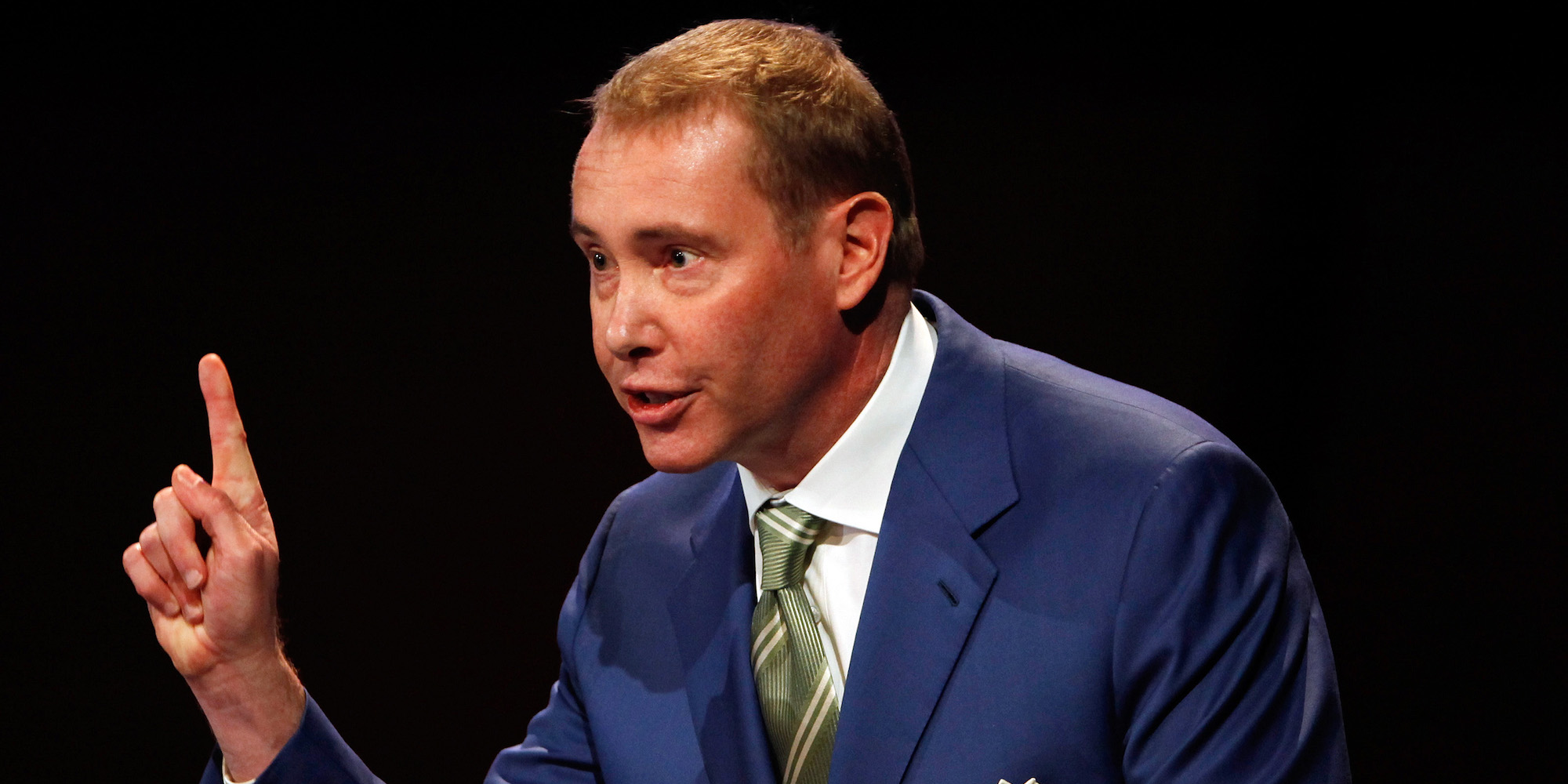- Jeffrey Gundlach said that the Federal Reserve may look to expand its balance sheet after a spike in overnight purchase agreements that prompted the Fed to put $128 billion into markets.
- Expanding the balance sheet is a baby step towards quantitative easing, Gundlach said, referring to it as “QE lite.”
- Gundlach has predicted a 75% chance of a US recession before the November 2020 election.
- Read more on Markets on Insider.
The Federal Reserve pumped $128 billion into markets in two installments Tuesday and Wednesday to calm a spike in one-day loans backed by Treasury bonds – otherwise known as repurchase agreements.
While the repo move isn’t an imminent disaster, it’s likely the Fed will use the “warning sign” to begin expanding its balance sheet, Jeff Gundlach, chief investment officer of DoubleLine Capital, said during a webcast on Tuesday.
Expanding the balance sheet is a way of “baby stepping” into quantitative easing, to “try to free up the plumbing of the banking system,” Gundlach said. Quantitative easing, or QE, is a way for central banks to inject more money into the overall supply.
Gundlach, who oversees $140 billion, reiterated this point again Wednesday.
"The Fed might have to start 'QE lite' as I call it, meaning they go back to expanding their balance sheet in line with the increase in currency to get the free reserves in the system higher," he said on CNBC's Halftime Report.
QE is usually used when interest rates are already low, as a way to jump start the economy. After the 2008 financial crisis, the Fed under then-chairman Ben Bernanke conducted unprecedented QE to boost economic recovery.
At the Federal Reserve Open Markets Committee Wednesday, the central bank cut its benchmark rate by 25 basis points, a move largely in line with expectations. It marked the second cut of 2019 - the only two since the financial crisis more than a decade ago. Previously, in July, the Fed cut by the same amount.
Gundlach, who's been referred to over time as the "Bond King," has predicted a 75% chance of a US recession before the presidential election in November 2020. He's reiterated this forecast recently, saying that the likelihood of a recession is now higher because of changes in the Treasury yield curve.
The yield-curve inversion - a long-watched indicator that has preceded every US recession since 1950 - is not the most important signal, he said. He thinks it's instead an inversion occurring and going away that's a true red flag. In August, the yield curve between 2- and 10-year Treasuries inverted and then righted itself later.
When recession does hit, Gundlach has said that he's worried about debt in the US, from government debt to student loans to the $8 trillion corporate-debt market.

